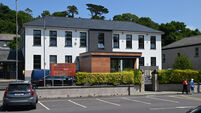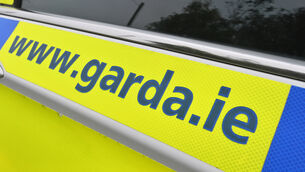House prices fall by 2.8% in three months as Brexit uncertainty blamed for slowdown

House prices have fallen by almost 3% over the last three months with the rate of inflation expected to flatline by the end of the year.
Brexit uncertainty and the Central Bank’s guidelines on mortgage lending have contributed to the slowdown, experts suggest.
The details are contained in the latest quarterly property report from property website, MyHome.ie, which is published in conjunction with Davy.
It shows that the annual rate of asking price inflation for an average three-bed, semi-detached home was just 0.3% to the end of the third quarter this year, and is expected to be close to zero by the end of the year.
The data also shows that the asking price for houses nationally during the third quarter is down 2.8% on the previous quarter to an average of €269,000, while in Dublin the average asking price was down 1.4% in the quarter to €376,000.
A county-by-county breakdown shows Dublin is the only county to show a reduction in actual asking prices with the figures remaining static in Kerry, Waterford, Carlow, Longford, Cavan, and Monaghan.
By contrast, Cork saw a 2.08% increase in asking prices over the last three months, while Westmeath and Donegal saw the largest increases, up 16.08% and 14.62% respectively.
While the third quarter covers July, August, and September — a traditionally quiet time for residential property sales — report author Conall MacCoille, the chief economist at Davy, said the 2.8% decline in the national average asking price figure over the period is higher than usual.
“We believe it primarily reflects constraints on home buyers’ leverage from the Central Bank of Ireland’s mortgage lending rules, now accompanied by the uncertainty of Brexit,” he said.
He also said the slowdown in asking price inflation does not imply that housing supply has caught up with demand. “There were 19,300 housing completions in the year to June 2019 but we believe natural household formation is at least 30,000 per annum if not higher — well in excess of current homebuilding levels.”
MyHome.ie’s managing director, Angela Keegan, said while asking price growth is softening, other key indicators are increasing.
“The volume of recorded house price sales continues to grow, rents continue to rise, mortgage lending is up, and there was an increase of some 6% in the number of new properties on the market (via MyHome.ie) at 10,846,” she said.
“In total there were some 23,700 properties listed on the site in September which is 4.7% up on the year and is the higher number of properties listed since mid 2015.”
The MyHome.ie/Davy report from quarter two showed that while there was a downward trend in the annual inflation rate, prices were still rising, just at lower rates. The annual asking price inflation rate for the period April-June was 2.4%, the lowest level in five years.
In Dublin, asking price inflation was negative for the first time since 2013, down €2,300 year-on-year.
Meanwhile, Respond, the housing agency, has called on the Government to use next month’s budget to address the housing and rental crisis through targeted measures. In its pre-budget submission, it called for the introduction of a national affordable rental scheme for intermediate households —those who won’t qualify for a mortgage and are struggling to rent in the private rental sector but who are not eligible for social housing.












